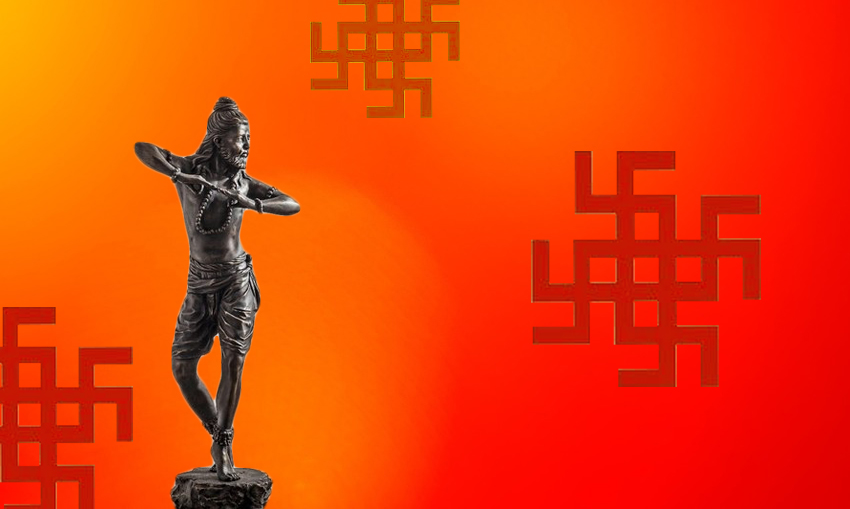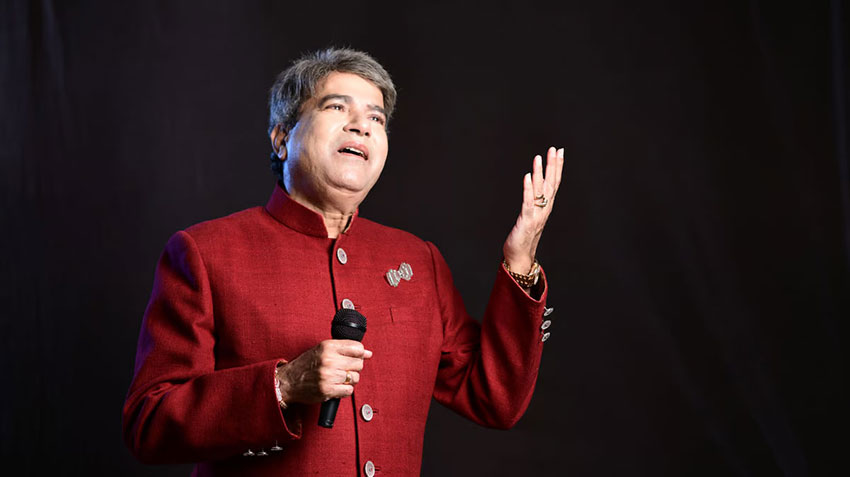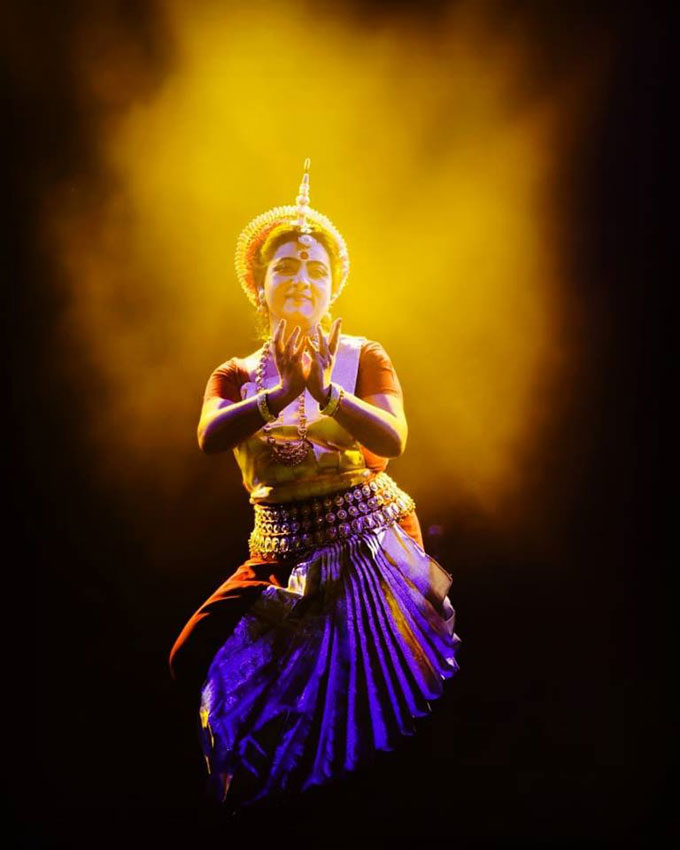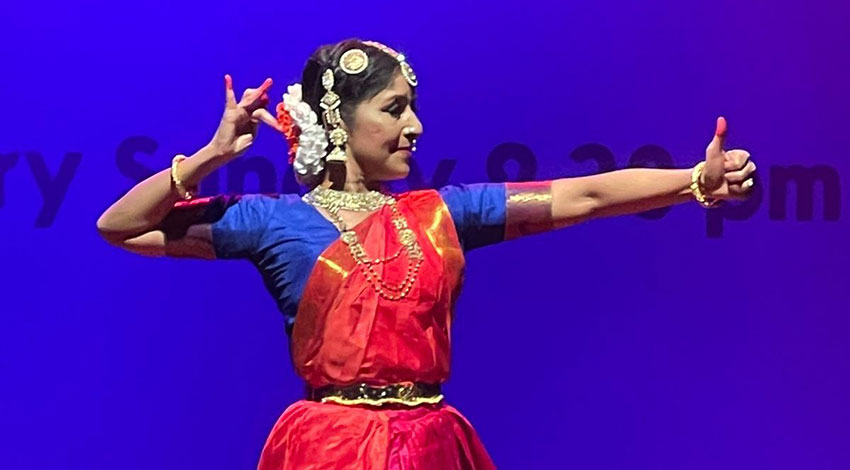Bharat, India, is named after Bharata muni. Sadly, today he is a forgotten figure; his path-breaking ‘Natya Shastra’ the oldest extant work in the world dealing comprehensively with the arts, relatively abandoned. Thus, it was heartening to see the installation of a statue of Bharata muni at the Indira Gandhi National Centre for the Arts (IGNCA) Delhi on the auspicious occasion of Guru Purnima. Standing about 4 feet high, the polished black stone murti depicts a handsome, benign Bharata muni in a posture known as ‘Vaishnava Sthana’.
Padma Bhushan Dr Padma Subrahmanyam has studied the Natya Shastra extensively and became fascinated with the writer, Bharata. In her words “The Natya Shastra is an encyclopedic work which has 36 chapters on theatre, poetry, music, dance, communication, architecture, decoration – no aspect of dramaturgy has been left out. That is why it is called ‘Natya Veda’ too. A Veda gives wisdom; a ‘Shastra’ gives only knowledge. The study of our culture through texts like the Natya Shastra opens our minds to understand other cultures as well. We Indians as people are very open”.
It was she who conceived Bharata muni as he has been depicted, with 4 arms, standing upright. She found he was depicted in friezes in temples as a venerable sage, sitting in meditation, with a beard; but this aspect did not appeal to her. She felt a person who was so fascinated with the world of the arts, who had written such a comprehensive work as the Natya Shastra would not be an old man in meditation but an active youthful practitioner. As such, while thinking intensely on him, his persona came to her in a dream, and it was this form that she had recreated in stone and installed as a statue to worship in her institution in Chennai. Reproduction of this statue was made for IGNCA Delhi. Dr Padma explained “While I had undertaken to get another statue made for Delhi, I found I just could not get in touch with the original craftsman. I waited around 7 months trying to get in touch, but eventually, I had to source others, a husband and wife team, who were based in Bangalore. I had to coordinate their work from Chennai, and for the final finishing touches I stayed in Bangalore for a week”.
Dr Padma continued “Bringing Bharata physically to IGNCA in Delhi is the best thing that could have happened. He came from Bangalore to Delhi by truck, carefully packed to transport him safely. Every object, animate or inanimate, has vibrations; and Bharata muni will bring only positive vibrations to IGNCA.
Other countries are proud of their heritage that is 500 years old; we have a heritage that is thousands of old yet we don’t proclaim it.”

The 4 armed figure is in a standing pose. The top hand is holding ‘veena’, representing the music of the Natya Shastra; 8 chapters are devoted to music. The other hand holds the ‘damru’ bringing in the Shiva aspect, the Maheshwara sutra which is said to the basis for all phonetics. Right lower hand depicts ‘gnana mudra’, the left hand is holding a book, a palm leaf manuscript depicting wisdom. Dr Padma explained how she tried to have the “murti” depicting other aspects too; one earring is that of Shiva, the other earring is that of Parwati. A crane at his feet is associated with concentration and focus so that was added too. The stone used is a kind of soapstone, waxed in black polish. The sculptors were a husband and wife duo, Venkatabhatt and Smt T Ratna. Dr Padma opined “Sculptors are not creators; they only reveal the image that is already present in the stone.”
Dr Sonal Mansingh speaking on the occasion lauded Dr Padma Subrahmanyam’s efforts in creating the statue of Bharata muni; and said similar statues should be installed outside Parliament and at Rabindra Bhawan, in the campus of the Sangeet Natak Akademi and Lalit Kala Kendra. The concept of positive vibrations spoken of by Dr Padma was true, she said and these institutions need to be reminded of our glorious heritage embodied in the ‘murti’ of Bharat Muni. Dr Mansingh said, on a wry note, “Artists are becoming an endangered species”. Our intangible culture, which is as subtle, but as pervasive as the aroma of ‘agarbatti’, needs to be preserved or we will soon become like a country without a soul; a body without life, she added.










